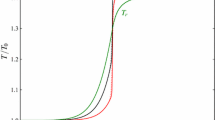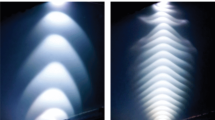Abstract.
We solve the equations of radiation hydrodynamics in the two-temperature fluid approximation on an adaptive grid. The temperature structure depends upon the electron-ion energy exchange length, \(l_{ei}\), and the electron conduction length, \(l_{ec}\). Three types of radiating shock structure are observed: subcritical, where preheating of the unshocked gas is negligible; electron supercritical, where radiation preheating raises the temperature of the unshocked electron fluid to be equal to the final electron temperature; supercritical, where preheating and electron-ion energy exchange raise the preshock \(T_{e,i}\) to their final post shock values. No supercritical shock develops when \(l_{ei}\) is larger than the photospheric depth of the shocked gas because a negligible amount of the ion energy is transferred to the electrons and the shock is weakly radiating. Electron conduction smooths the \(T_e\) profile on a length scale \(l_{ec}\), reducing the radiation flux.
Similar content being viewed by others
Author information
Authors and Affiliations
Additional information
Received 21 September 1998 / Accepted 15 January 1999
Rights and permissions
About this article
Cite this article
Sincell, M., Gehmeyr, M. & Mihalas, D. The quasi-stationary structure of radiating shock waves. II. The two-temperature fluid. Shock Waves 9, 403–411 (1999). https://doi.org/10.1007/s001930050170
Issue Date:
DOI: https://doi.org/10.1007/s001930050170




